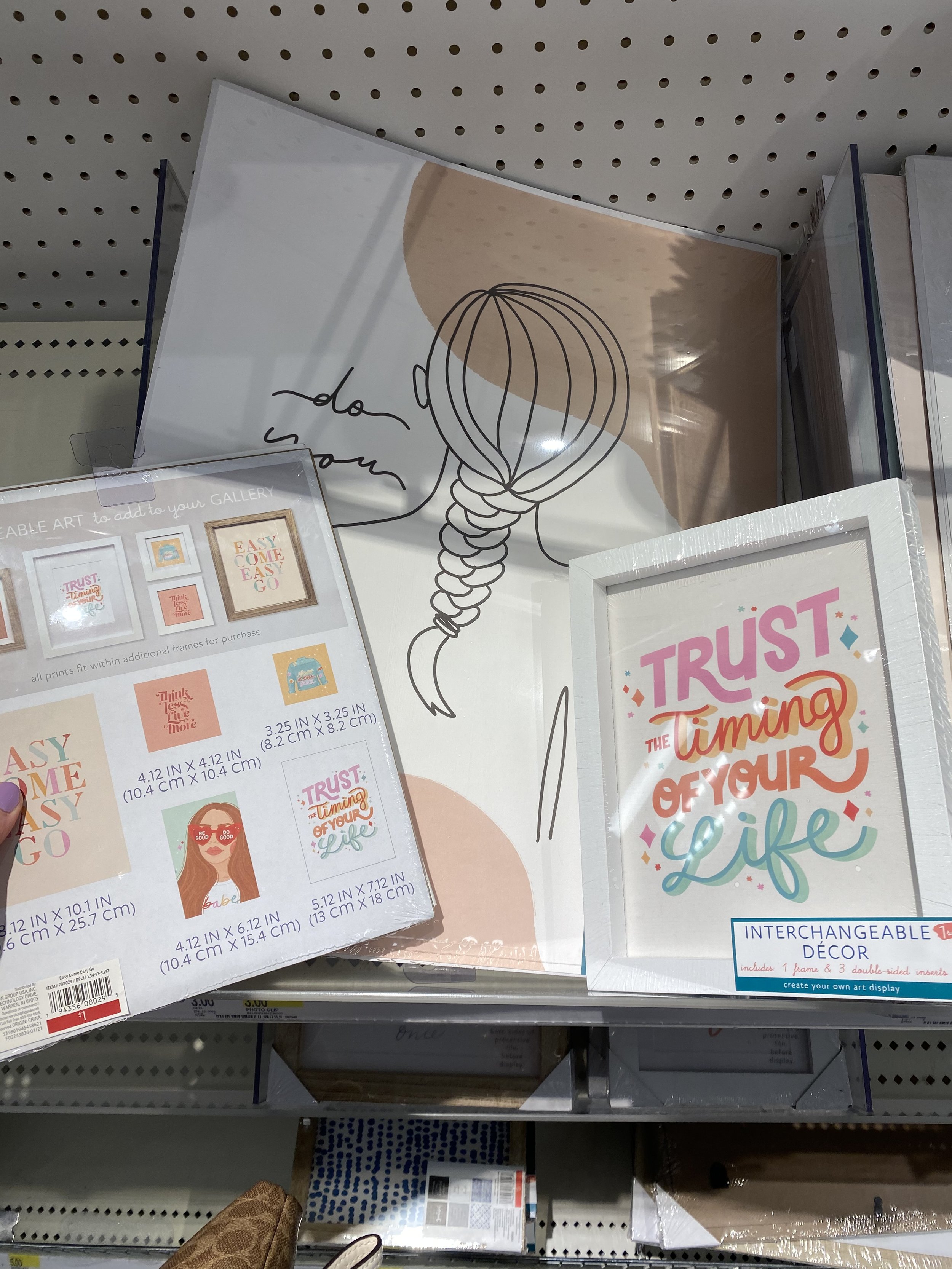How to License Your Art & Land Clients as a Surface Designer
I get asked this all the time: "How do you license your art? How did you get your art into Target?" It sounds like a big question, and it is! But when you break it down, licensing your art really comes down to two steps:
Creating artwork that clients want to put on products — showing them you’ve got a portfolio ready for the market.
Finding and pitching the right clients — the ones who would love your style and make it shine on their shelves.
If you’re curious about where to start, here are some friendly tips to help you build your portfolio and reach out to clients with confidence.
Build a Portfolio of Artwork That Sells
Creating a marketable portfolio is about more than just beautiful artwork — it’s about designing art that clients can easily see on products. Here’s how you can get started:
1. Start with a Little Window Shopping
Go check out the stores where you dream of seeing your art. Take notes on what you see:
Styles and themes that seem popular or seasonal.
Sentiments — is the vibe cheerful, cozy, bold, or cute?
Color palettes that pop up again and again.
Scale and layout of the designs (think about how patterns or illustrations fit onto a pillow vs. a notebook).
This little research trip gives you a sense of what’s working on shelves now and what buyers are looking for.
2. Think “Product First” When You Design
Here’s a trick: design your artwork with a product in mind. Think about whether your piece would be a great fit on a mug, a tote, or stationery, and let that guide your composition and style. It’ll give your work a real-world vibe that buyers can see right away.
3. Design in Collections
Creating a set or collection (rather than one-off pieces) helps you stand out. Buyers love variety, so if you can give them a statement piece, coordinating patterns, and a bit of lettering, it’s like handing them a mini product line they can work with right away.
4. Mix in Must-Haves and Trends
Retailers need pieces for specific themes (like holidays, birthdays, etc.), so keep this in mind! Adding in current trends — color combos, popular themes — makes your work even more appealing. Trends move quickly, so a mix of timeless themes and on-trend elements can keep your designs relevant.
5. Use Mockups to Bring Your Work to Life
Seeing your artwork on actual products is a game-changer. Mockups help you understand how your designs fit, and they’re amazing to share with potential clients. When you pitch, mockups show how ready your work is for the shelves, making it easier for clients to picture it in their stores.
Find Clients and Pitch Your Work
Once your portfolio is prepped and polished, it’s time to start connecting with the right clients! (Note: You only need a few pieces of art to start pitching so don’t wait until perfect!)
Here’s where to begin:
1. Make Your Dream Client List
Think of the brands and stores where you’d love to see your art. Write down a list of the companies that feel like a perfect fit for your style.
2. Do a Little Web Sleuthing
Head to each company’s website to see if they have guidelines for artist submissions. If not, try finding art directors or creative managers on LinkedIn. These folks are usually the ones selecting new artwork, so they’re your key contacts!
3. Pitch with Confidence
When you’re ready to reach out, keep it simple and visual. Share some mockups or collection highlights that fit their brand style. Showing them you’ve thought about how your art aligns with their products makes your pitch all the more compelling!
A Final Thought
This is what has worked for me and I have had my artwork seen in Target, Walmart, TJ Maxx, Hallmark, Papyrus and more! Licensing your art and working with big clients can feel like a huge leap, but with a little research, creativity, and strategy, you’re on the right path. Focus on creating a portfolio that sells, finding the right clients, and pitching your work with confidence — and soon enough, you could be landing the clients of your dreams!
Ready to see your designs in stores?
Join the 8-week "Moodboard to Market" course to create a polished collection for your licensing portfolio and learn how to pitch to clients! This course guides you through building cohesive collections, creating product mockups, and marketing your work to potential clients. Sign up for the waitlist to get notified when enrollment opens!





